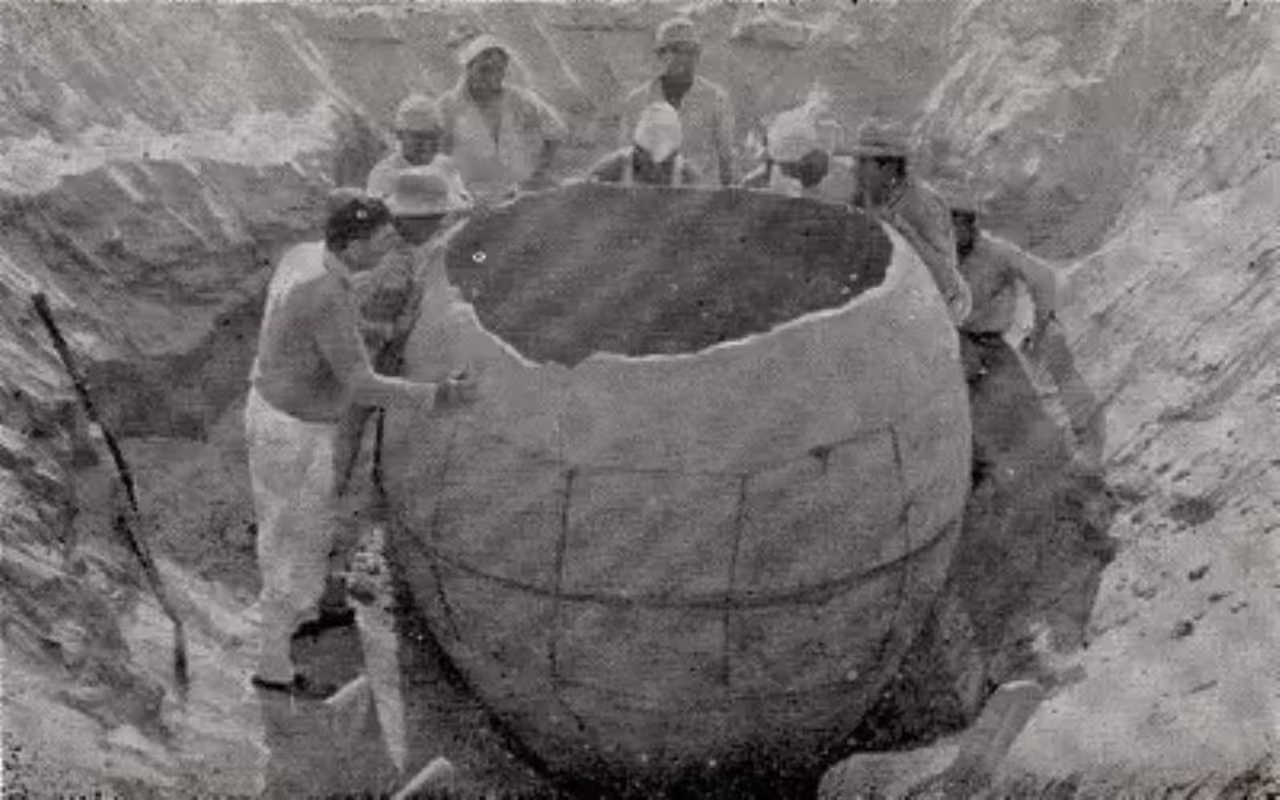
China has big ambitions for lunar exploration. The Asian country has successfully launched several missions to Earth’s natural satellite, including the first lunar landing on the far side of the Moon in 2019 and the first return of lunar samples in 2020. Now, China plans to build a permanent scientific station on the lunar surface, which could house astronauts and robots in the future.
What are China’s motives for undertaking this project? According to experts, there are several reasons for China’s interest in the Moon, both scientific and geopolitical. On the one hand, the Moon offers a unique opportunity to study the origin and evolution of the solar system, as well as to conduct experiments in a low-gravity, high-radiation environment. On the other hand, the Moon also represents a strategic scenario to demonstrate China’s power and influence in the space domain, as well as to access potential natural resources such as helium-3, an isotope that could be used for nuclear fusion.
It should be noted that China is not alone in its race for the Moon. Other countries such as the United States, Russia, India and Japan also have plans to send manned or unmanned missions to the satellite in the coming years. Thus, competition for exploration and exploitation of the Moon is intensifying, posing new challenges and opportunities for international cooperation in space.
China’s space program: from Mao to Xi Jinping
China has made impressive progress in the space domain in recent decades, from the launch of its first satellite in 1970 to the construction of its own space station in 2021. How can this evolution be explained and what are the Asian giant’s goals in space?
The origin of the Chinese space program dates back to the time of Mao Zedong, who considered the mastery of space technology a matter of national prestige and security. Under his leadership, China developed its first rockets and satellites, as well as a project to send a man into space, which was thwarted by the country’s political and economic instability.
After Mao’s death in 1976, the space program entered a phase of stagnation and isolation, until Deng Xiaoping promoted a policy of reform and opening up that favored international cooperation and investment in science and technology. Under his mandate, China launched its first communications satellite and established contacts with the European Space Agency and NASA.
The real breakthrough of China’s space program came with the rise to power of Jiang Zemin in 1989, who launched Project 863 to develop strategic technologies, including space technologies. Under his leadership, China succeeded in sending its first astronaut into space in 2003, becoming the third country to do so after the Soviet Union and the United States.
China’s current president, Xi Jinping, has given continuity and priority to the space program, which he considers a key element for the country’s economic development, national defense and global leadership. Under his tenure, China has achieved milestones such as landing a probe on the far side of the Moon in 2019, sending a mission to Mars in 2020 and building its own space station in 2021.
China’s future plans in space include establishing a permanent lunar base, exploring asteroids and outer planets, developing military and civilian satellites, and participating in international cooperative projects. The Chinese space program has thus become a symbol of the rise and ambition of the world’s most populous country.
The Chang’e mission and its contribution to the Chinese space program
The Chang’e mission is an ongoing series of robotic lunar missions of the China National Space Administration (CNSA), which aims to explore the surface and subsurface of the Moon, as well as to bring lunar samples back to Earth. The mission’s name is inspired by the Chinese goddess of the Moon, Chang’e, who according to legend lived on the natural satellite after ingesting an elixir of life. The Chang’e mission is considered an important part of China’s space program, which seeks to demonstrate the country’s scientific and technological advancement, as well as its growing power and influence in the international arena.
The Chang’e mission is divided into four phases: orbiting, lunar landing, return and exploration. The first phase began in 2007 with the launch of the Chang’e 1 orbiter, which conducted a detailed mapping of the Moon’s topography and mineral composition. The second phase began in 2013 with the launch of the Chang’e 3 lander and the Yutu (Jade Rabbit) rover, which became the first Chinese rovers to land on the Moon and explore the lunar terrain.
The third phase began in 2020 with the launch of the Chang’e 5 spacecraft, which successfully collected and brought back to Earth 1,731 grams of lunar samples, the first such mission since 1976. The fourth phase will begin in 2024 with the launch of the Chang’e 6 spacecraft, which plans to land on the lunar south pole and conduct studies on lunar resources, especially helium-3, a potential fuel for nuclear fusion.
The Chang’e mission has brought several milestones and challenges for the Chinese space program, such as the first soft landing on the far side of the Moon with Chang’e 4 in 2019, or the first deployment of a Chinese flag on the lunar soil with Chang’e 5 in 2020. In addition, the mission has involved numerous Chinese scientists and engineers, including Zhou Chengyu, a 24-year-old woman who was responsible for the control system of the Chang’e 5 ascent module, and who has become a new national heroine for her key role in the success of the mission.
The Chang’e mission is an example of how China is making great strides in space exploration, and how it is contributing to the scientific knowledge and technological development of mankind. The mission also opens up new possibilities for future international lunar collaborations, as well as for the preparation of an eventual manned mission to the Moon by China.
Global competition for lunar resources: what is China looking for on the Moon?
China is one of the space powers aiming to explore and exploit the Moon’s resources. Since 2018, it has launched several missions to study the hidden side of the Moon, a region that has never before been visited by any spacecraft. Its most recent mission, Chang’e-5, succeeded in bringing back to Earth samples of lunar rock for the first time since 1976.
Why is China interested in the Moon? According to experts, there are several reasons: scientific, technological, economic and geopolitical. On the one hand, China wants to expand its knowledge about the history and geology of the Moon, especially its far side, which could contain information about the origin and evolution of the Earth’s natural satellite.
On the other hand, China wants to develop its space technology and demonstrate its ability to perform complex and challenging missions. In addition, China seeks to take advantage of lunar resources, such as helium-3, an isotope that could be used as fuel for nuclear fusion, or frozen water, which could be used to produce oxygen and hydrogen.
Finally, China wants to consolidate its position as a space superpower and compete with other countries that also have plans for the Moon, such as the United States, Russia or India. China has announced that it wants to build a permanent lunar base and send astronauts to the lunar surface within the next decade. It has also invited other countries to cooperate with its space program and to participate in its Tiangong space station.
The global competition for lunar resources poses several challenges and opportunities for the future of space exploration. On the one hand, it could drive scientific and technological advancement and foster international cooperation. On the other hand, it could generate tensions and conflicts between the countries involved and jeopardize the ecological balance of the Moon.
The space race in Asia: China, India and Japan in the struggle for supremacy
The space race in Asia is one of the hottest topics of the 21st century. Three emerging powers, China, India and Japan, are vying for leadership and influence in the field of outer space exploration and exploitation. Each has its own goals, capabilities and challenges, but they also share common interests and opportunities for cooperation.
China is the most ambitious and determined player of the three. Its space program dates back to the 1950s, but has gained new momentum in recent years with the launch of manned missions, lunar and Martian probes, communication and navigation satellites, and a space station of its own. China seeks to demonstrate its technological and military might, as well as its international prestige, through its space achievements. It also aims to take advantage of the natural resources and strategic advantages offered by space.
India is China’s most direct rival in the region. Its space program also began in the 1950s, but has had a more modest and gradual development. India has focused on the peaceful and civilian use of space, especially in telecommunications, meteorology and Earth observation. However, it has also made significant advances in planetary exploration, with missions to the Moon and Mars, and in space defense, with the successful testing of an anti-satellite weapon. India seeks to strengthen its national security and socio-economic development with its space program.
Japan is the pioneer and the most experienced of the three countries in the space field. Its space program began in the 1960s and has reached important milestones such as launching its own rockets, participation in the International Space Station, asteroid exploration and cooperation with other space agencies. Japan has a pragmatic and balanced view of space, combining scientific, commercial and security aspects. Japan seeks to maintain its technological and innovative leadership, as well as its active role in space governance and cooperation.
The space race in Asia poses both challenges and opportunities for the international community. On the one hand, there is the risk of escalating tensions and conflicts between regional actors, which could affect global stability and security. On the other hand, there is the possibility of fostering dialogue and collaboration between Asian countries and the rest of the world, which could contribute to scientific progress and human welfare.







